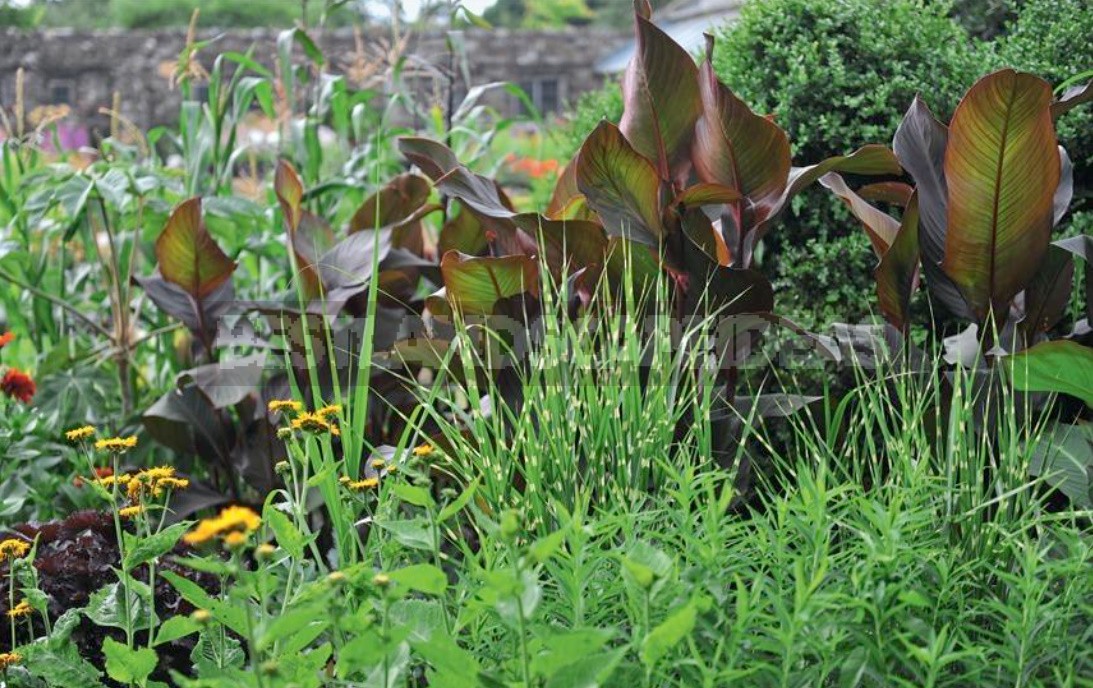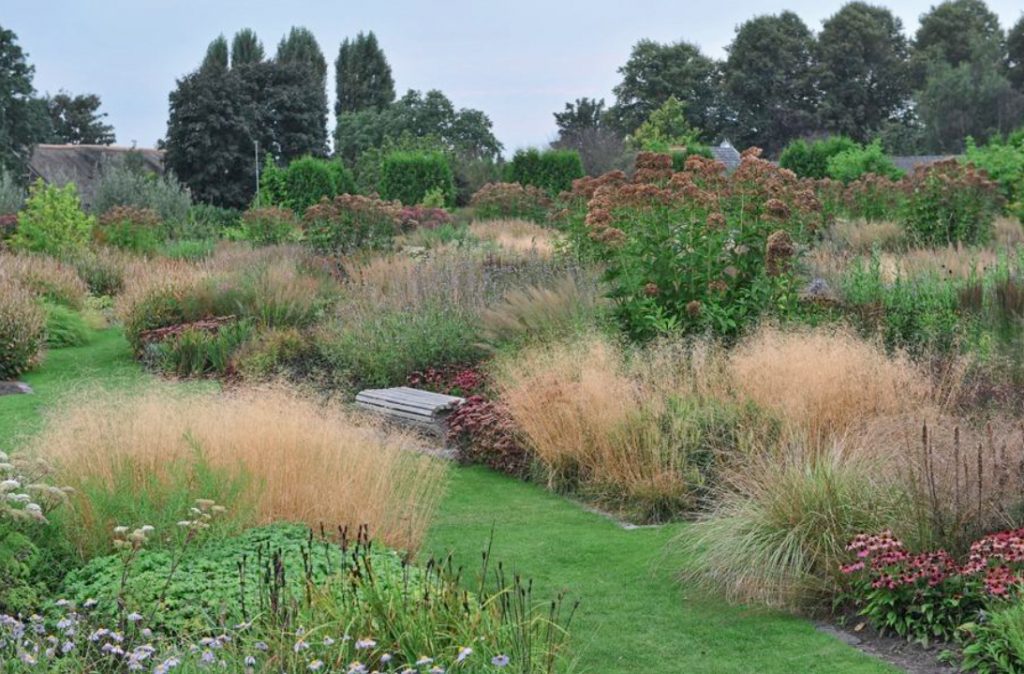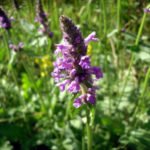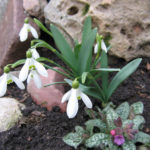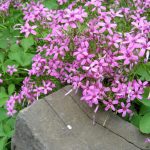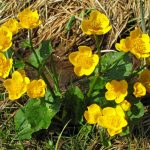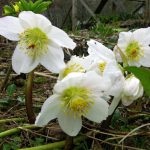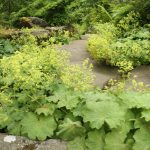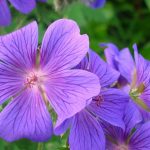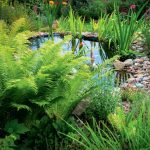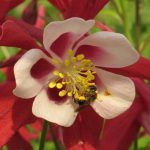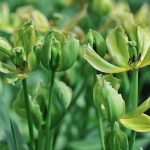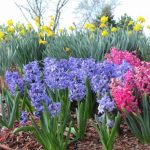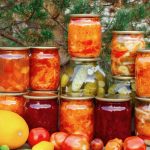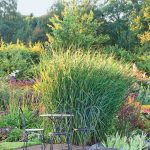Decorative cereals have long been on the crest of garden fashion, and their popularity is only growing. The fact is that they are not only beautiful, but also universal: any flower garden in any environmental conditions can be selected plants from this group. Decorating the garden, cereals give it a natural, “miraculous” appearance.
Let’s make a reservation right away: in this article, we also refer to cereals (Carex, Luzula, Typha), which are not considered to be cereals from a Botanical point of view. Today we present 20 options for using cereals in the garden — and this is a small fraction of the possible.
1. Decorative cereals are the basis of meadow flower beds
They create the image of a natural meadow, repeating rhythmically here and there throughout the entire space of the flower garden.
2. Cereals look great in group plantings
In nature, cereals are usually perceived as an array. In the garden, many of them will also look great in the mass. In large gardens, Andropogon gerardii, Calamagrostis acutiflora ‘Karl Foerster’, Phalaris arundinacea, tall species and varieties of Miscanthus, varieties of Molinia arundinacea, Aureomarginata, Spodiopogon sibiricus can be used in group plantings.
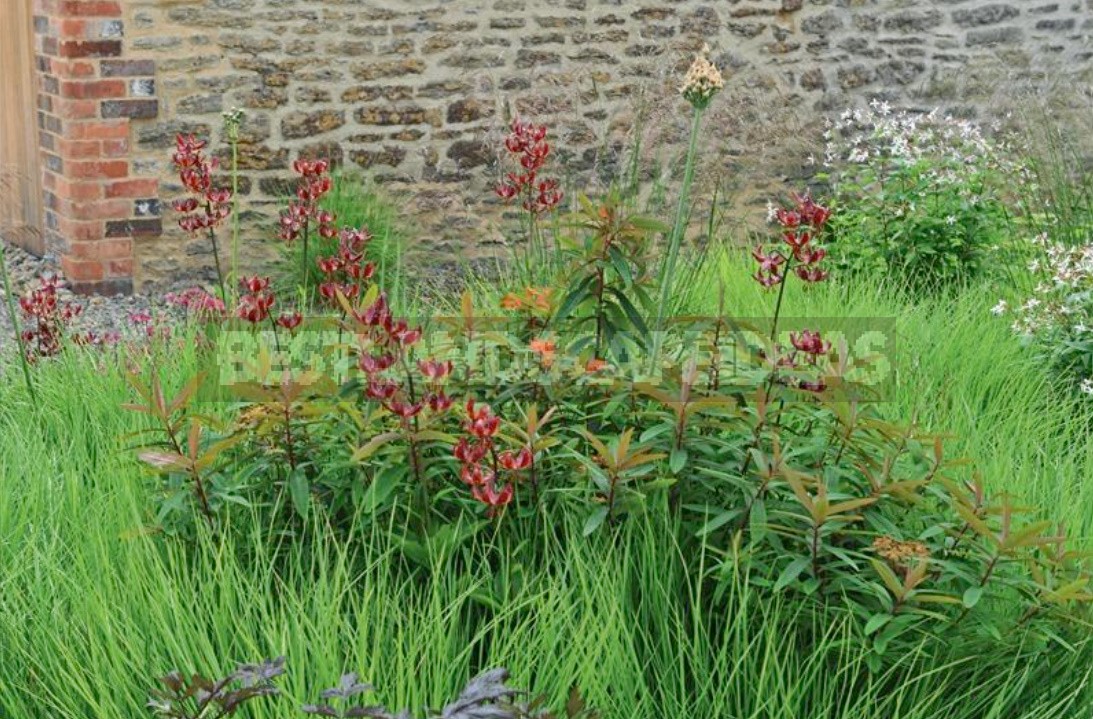
In small gardens or in a “matrix planting” — with the point addition of beautifully blooming perennials (Echinacea, Lilium martagon, sage, geranium) for contrast — less tall cereals will look good: Calamagrostis brachytricha and compact varieties Calamagrostis acutiflora, Leymus arenarius, Molinia caerulea varieties, compact varieties Panicum virgatum, Sporobolus heterolepis, Deschampsia cespitosa.
3. Decorative cereals are good not only as extras, but also as foreground actors
They can play first fiddle in the flower beds. In large-scale plantings, the high varieties Miscanthus sinensis and Molinia arundinacea, Aureomarginata, Calamagrostis acutiflora ‘Karl Foerster’ and ‘Waldenbuch’ are suitable for soloists.

In small flower gardens, the focus will be on plants of more modest sizes: Calamagrostis brachytricha, Calamagrostis acutiflora ‘Avalanche’ and ‘Overdam’, compact varieties Miscanthus sinensis, Molinia caerulea and Panicum virgatum, Festuca mairei, Chasmanthium latifolium and Spodiopogon sibiricus.
4. as groundcover plants, cereals will create a “free” alternative to the lawn
And not only in the sun, but also in the shade. In forest areas, Briza media, Carex plantaginea and Carex muskingumensis, Deschampsia cespitosa, Hakonechloa macra, Luzula sylvatica and Luzula nivea, Holcus mollis, Melica nutans and Melica uniflora, Molinia caerulea can be used for this purpose.
Well-lit areas will be filled with Achnatherum calamagrostis, Festuca gautieri and Festuca scoparia, Helictotrichon sempervirens, Molinia caerulea, Sesleria nitida, Sesleria caerulea and Sesleria autumnalis, Sporobolus heterolepis.
5. One of the best ways to smooth out sharp corners and blur straight, like an arrow, the edges of the path is to plant decorative cereals
Achnatherum calamagrostis, Deschampsia cespitosa, Festuca mairei, Hakonechloa macra, Luzula sylvatica, compact varieties Miscanthus, Sesleria, Sporobolus heterolepis are useful here.
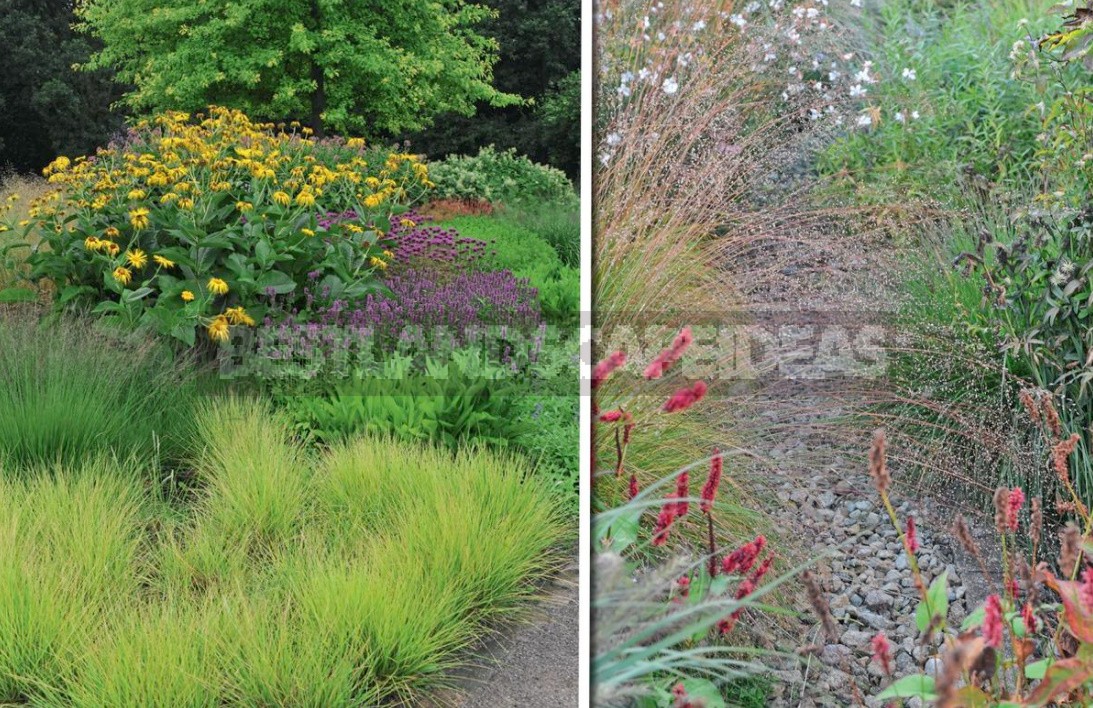
6. with the help of cereals, you can create small “screens”
and even long hedges that will visually divide the garden space.
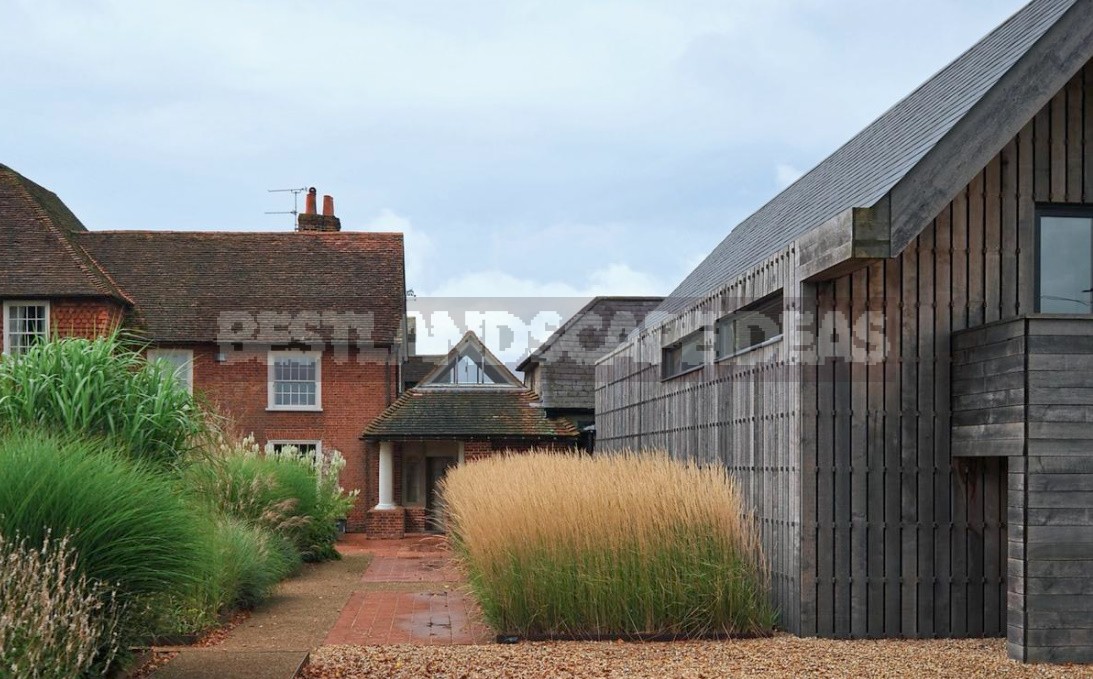
Calamagrostis acutiflora ‘Karl Foerster’, tall species and varieties of Miscanthus, Molinia arundinacea ‘Karl Foerster‘ and ’Windspiel ‘ will cope with this task.
7. Cereals will decorate both the coast and the water surface of the garden pond
On the shore, Miscanthus, Phalaris arundinacea, Carex riparia ‘Variegata’, Amazone Myst, Carex stricta ‘Aurea’, Carex muskingumensis, Carex plantaginea, Carex crinita, Carex nigra will Grow well in moist soil.
In the water grow and winter varieties Phalaris arundinacea, Glyceria maxima ‘Variegata’, Carex riparia and Carex stricta ‘Aurea’, Eriophorum latifolium, Typha angustifolia, Juncus effusus, Aureomarginata, Phragmites australis ‘Variegatus’, Zizania latifolia.
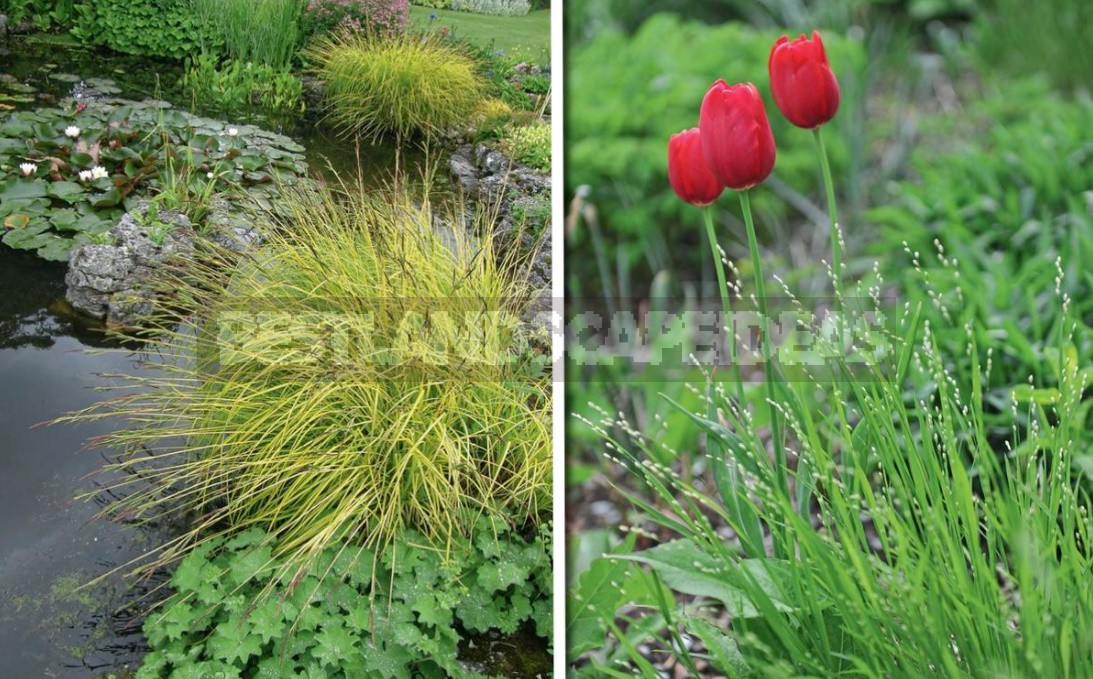
8. Spring and summer bulbs will only benefit from the neighborhood with cereals
For example, any variety of tulips is simply irresistible in a swaying sea of white inflorescences Melica uniflora ‘Albida’. Festuca mairei and other sprawling grasses-“hummocks” will cover the drying stems of daffodils, tulips, hyacinths and small-leaved plants with their foliage. Yellow Milium effusum ‘Aureum’ it contrasts vividly with the blue Muscari flowers. Well, the dried inflorescences of onions and Nectaroscordum are beautiful in the haze of Deschampsia cespitosa.
9. September — time for a solo party of cereals with autumn color
Various tones of yellow, orange, red, and purple are acquired by Andropogon gerardii, Calamagrostis brachytricha, some varieties of Miscanthus sinensis, Miscanthus sacchariflorus and ‘Purpurascens’, Molinia, many varieties of Panicum virgatum, Sporobolus heterolepis, Hakonechloa macra, Schizachyrium scoparium.
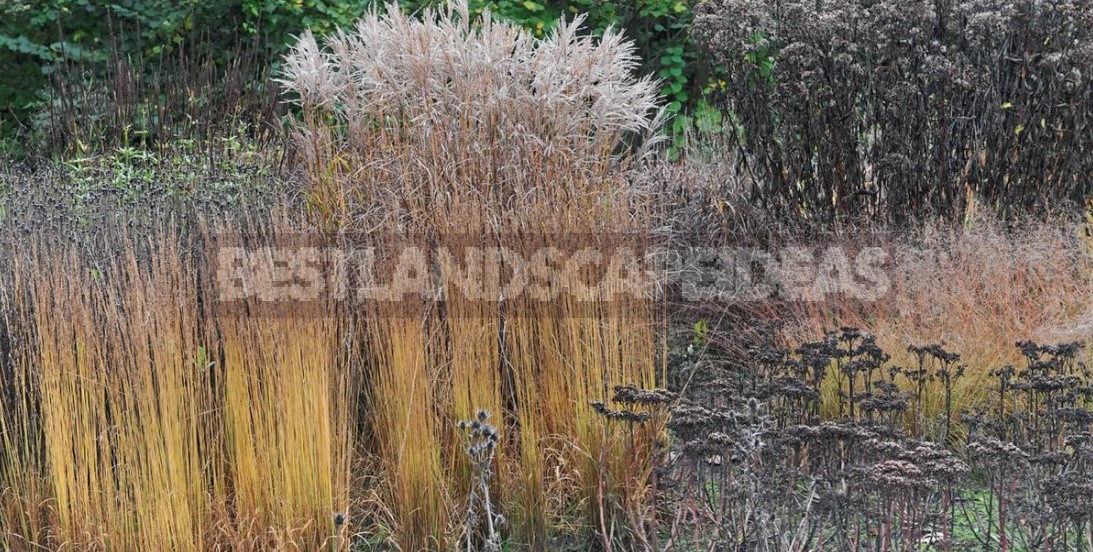
10. Many cereals can be grown in containers
This benefits both balcony gardening and landscaping of paved areas and wooden decking. Achnatherum calamagrostis, compact varieties Molinia caerulea, Festuca, Helictotrichon sempervirens, varieties Hakonechloa macra, compact varieties Miscanthus sinensis can grow in close quarters, but not in offense. For the winter, containers need to be dug up or removed to a non-freezing room. Some non-hardy cereals in the middle zone: Celtica gigantea, Pennisetum alopecuroides varieties — this is the only way to grow.
And some overly sprawling cereals are just easier to keep in pots. These are Hierochloe odorata, Leymus arenarius, and Phragmites australis ‘Variegatus’. Annual cereals are also very good in containers.
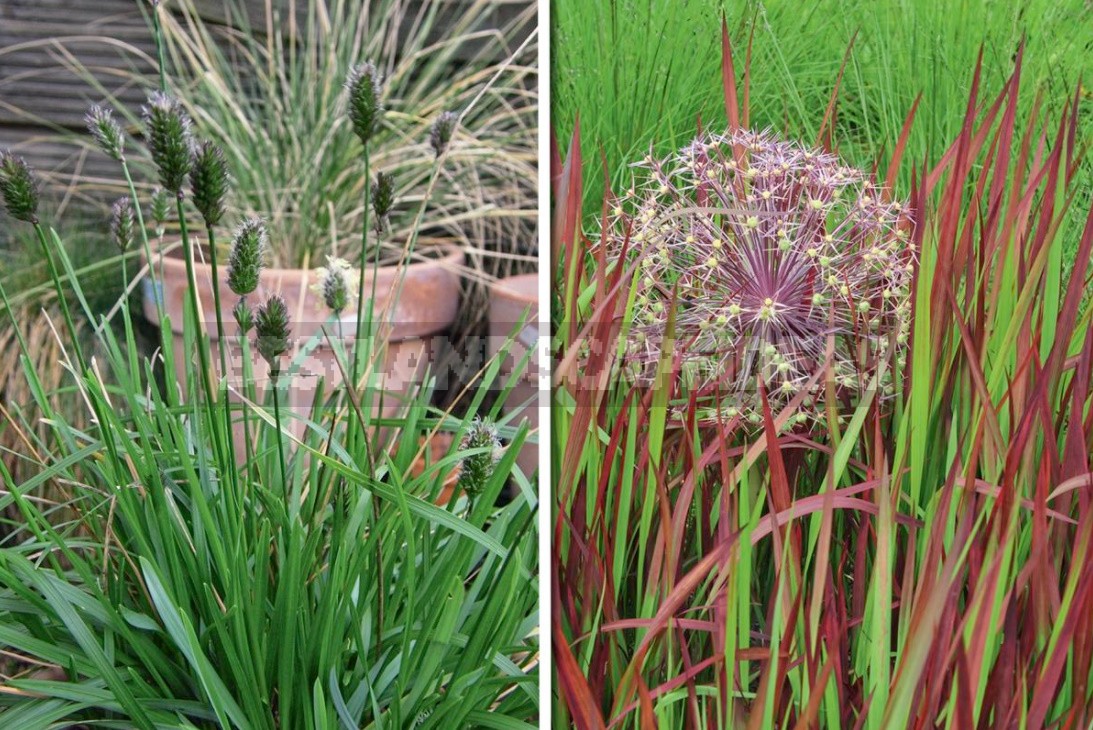
11. In the traditional mixed borders also has a place for cereals
They often set a color theme — choose plants by color. For example, the “hot” red flower garden will fit Imperata cylindrica ‘Red Baron’, Panicum virgatum ‘Shenandoah’ and other varieties that turn red in the fall, as well as varieties of Miscanthus sinensis with similar behavior.
12. Annual cereals look very impressive
You will not regret if you sow Briza maxima, Lagurus ovatus, Lamarckia aurea, Pennisetum, Panicum virgatum and Panicum miliaceum, Setaria italica, Phalaris canariensis and Hordeum jubatum.

All of them have a short life for one season. But it is spectacular and bright thanks to exceptionally beautiful inflorescences.
13. The grains are “working” even in late autumn
They are especially good in the icy ringing of frosts, and in winter — until they disappear in snowdrifts.
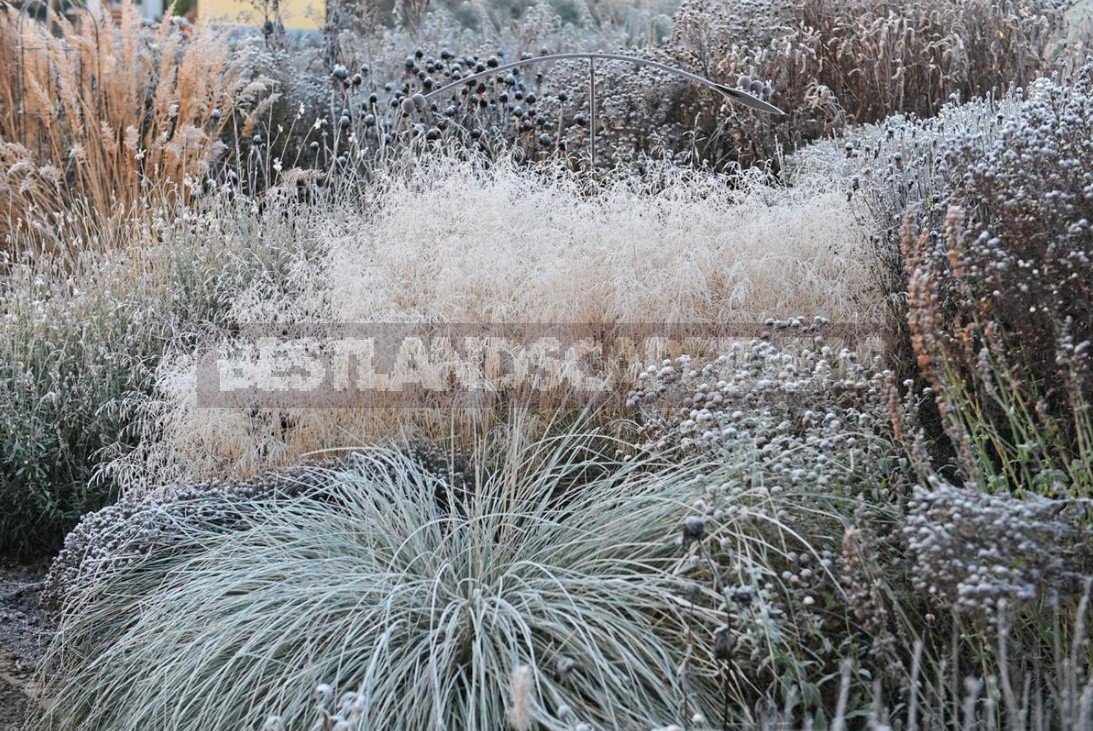
The most persistent are Calamagrostis acutiflora ‘Karl Foertster’ and Calamagrostis brachytricha, Miscanthus, Elymus virginicus and Elymus canadensis, Deschampsia cespitosa.
14. The shadow of the forest and flower beds adorn the shade tolerant grasses
These include: Milium effusum ‘Aureum’, Holcus mollis, Phalaris arundinacea, Brachypodium sylvaticum, Luzula, Carex muskingumensis, Carex plantaginea and Carex siderosticta, Melica, Briza media, varieties Hakonechloa macra and Deschampsia cespitosa, Avenélla flexuósa. Some shading is carried out by Molinia caerulea and Sesleria autumnalis varieties.
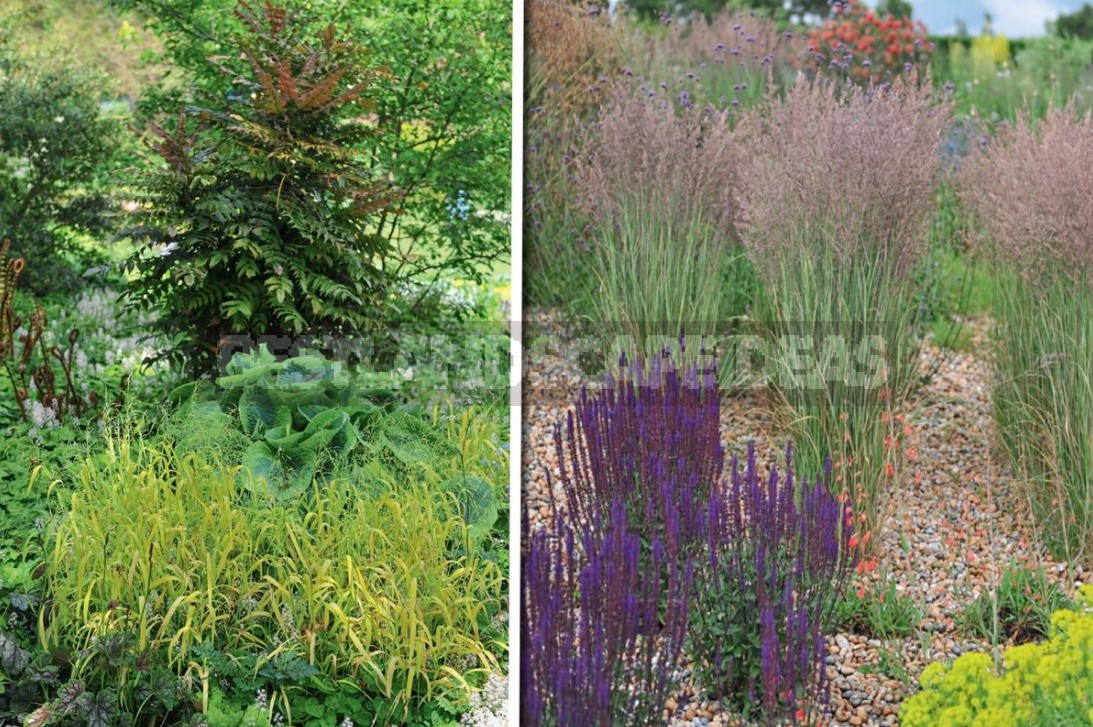
15. in dry gravel gardens, cereals will also find a place
here Andropogon gerardii, Bouteloua, Calamagrostis brachytricha and varieties of Calamagrostis acutiflora, Koeleria glauca, Elymus magellanicus, Helictotrichon sempervirens, Festuca, Carex montana, Sesleria nitida and Sesleria caerulea, Sporobolus, Schizachyrium will be appropriate scoparium.
16. the Yellow garden will only benefit if it will grow cereals
It will perfectly fit Milium effusum ‘Aureum’, Phalaris arundinacea ‘Aureovariegata’, Alopecurus pratensis ‘Aureovariegatus’, Carex stricta ‘Aurea’, Phragmites australis ‘Variegatus’, Aureomarginata, Hakonechloa macra ‘All Gold’ and ‘Aureola’. Or Calamagrostis brachytricha, which in the summer will dilute the Golden flowers with a haze of silvery inflorescences, and in the autumn it will become orange, if not Golden.
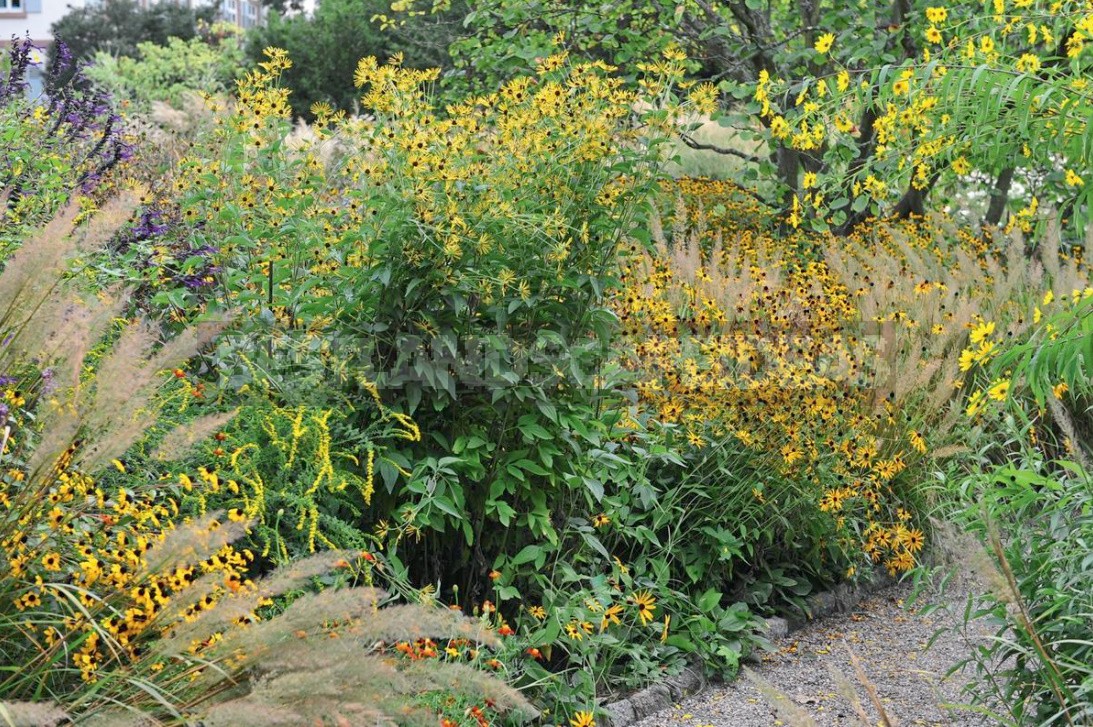
17. there are plenty of cereals to choose from for the white garden
These are Holcus mollis ‘Albovariegatus’, Calamagrostis acutiflora ‘Avalanche’ and ‘Overdam’, Phalaris arundinacea ‘Feesey’, ‘Picta’, ‘Tricolor’, Glyceria maxima ‘Variegata’, Molinia caerulea ‘Variegata’, Carex muskingumensis ‘Variegata’, Arrhenatherum elatius ‘Variegatum’, Hakonechloa macra ‘Albovariegata’, Deschampsia cespitosa ‘Northern light’.
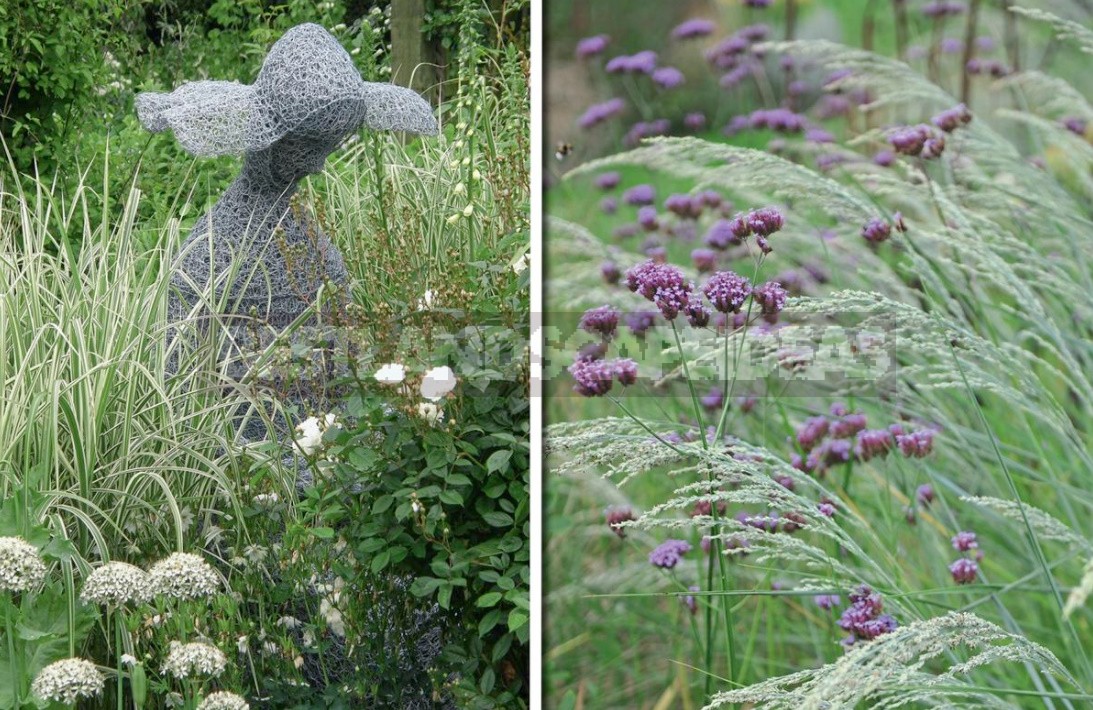
18. in the “blue” flower garden, you can plant cereals with blue-blue foliage
For example, Koeleria glauca, Elymus magellanicus and Leymus arenarius, Helictotrichon sempervirens, Festuca amethystina, Festuca mairei and Festuca glauca, Ammophila breviligulata, Panicum virgatum (varieties ‘Blue Tower’, ‘Cloud Nine’, ‘Dallas Blues’, ‘Heavy Metal’, ‘Heiliger Hain’, ‘Northwind’, ‘Prairie sky’), sesleria nitida, and sesleria caerulea.
19. Cereals can create a haze effect
Many cereals have openwork inflorescences that create a beautiful haze effect in the flower garden, blurring the outlines of neighboring plants. These are Calamagrostis brachytricha, Sporobolus heterolepis, many varieties of Molinia and Panicum virgatum, Deschampsia cespitosa.
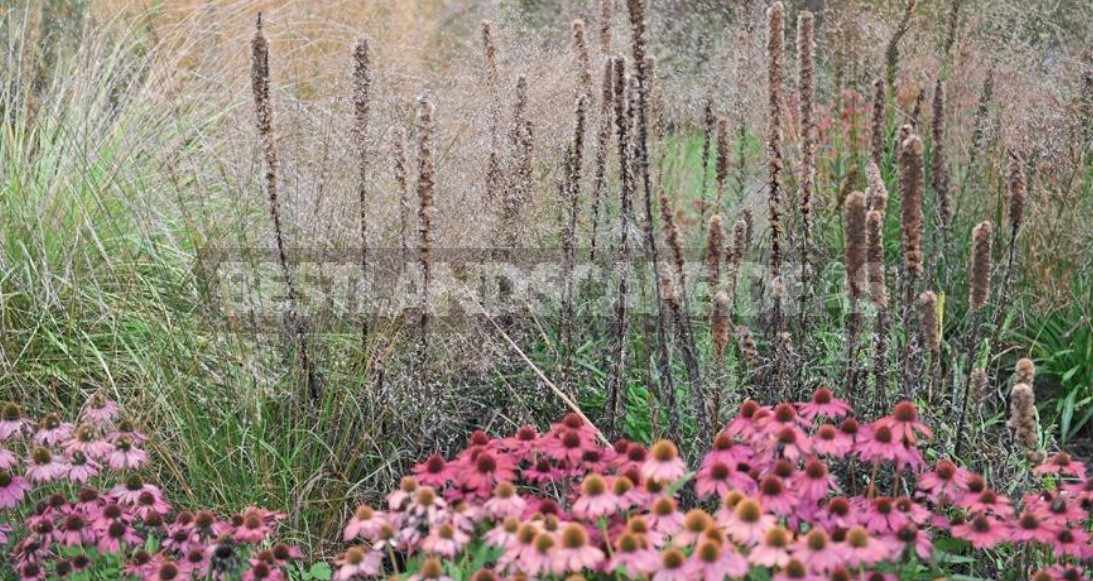
20. Some grasses can include in the “tropical” flower garden
For example, varieties of Miscanthus sinensis with unusual variegated foliage with transverse stripes (‘Gold Bar’, ‘Little Zebra’,‘Pünktchen’, ‘Strictus’, ‘ Zebrinus’) are perfectly combined with various exotic, heat-loving and large-leaved plants.
